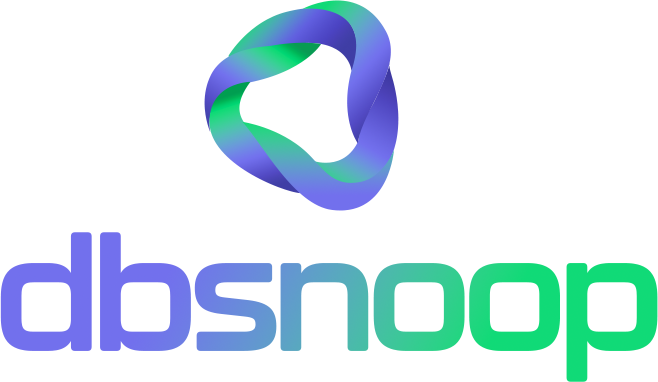

The cost of a database instance in the cloud is a direct function of the efficiency of its workload. Vertically scaling to mitigate CPU or I/O spikes is a financially unsustainable strategy that ignores the root cause: software inefficiency. Saving millions doesn’t come from a static report, but from a continuous technical diagnosis that establishes a direct correlation between the symptom (high resource consumption) and its origin (a specific query with a suboptimal execution plan).
This diagnosis quantifies the cost of operations like Full Table Scans versus Index Seeks, reveals lock contentions that paralyze the application, and generates precise recommendations, such as creating a specific index, that resolve the bottleneck at its source. Below, we detail technically how this output from dbsnOOp translates into massive ROI through the reduction of Opex costs (rightsizing), optimization of engineering time (MTTR reduction), and revenue recovery (latency decrease).
What dbsnOOp Report Reveals
To understand how the diagnosis generates savings, you must first understand its technical components. The dbsnOOp platform ingests and correlates hundreds of metrics to build a unified view of the database’s health. The “report” is the intelligent synthesis of this data, presented in an actionable way.
Workload Analysis and Top SQL Consumers
The starting point of any optimization is to identify where resources are being spent. dbsnOOp continuously ranks all queries executed in the database by vital metrics such as “CPU Time,” “Execution Count,” “Elapsed Time,” and “Logical Reads.” This immediately reveals the “Top 20” offenders: that small percentage of queries that is responsible for the majority of the system’s load. This ranking is the first piece of the puzzle, directing the engineering team’s focus to where the optimization impact will be greatest.
Execution Plan Diagnosis and Index Recommendations
For each query identified as a resource consumer, dbsnOOp captures and analyzes its execution plan. This is the “map” that the database optimizer uses to fetch the data. The platform’s diagnosis translates complex operations into clear insights. It automatically identifies high-cost operations, such as Full Table Scans on tables with millions of rows, and determines the cause. In most cases, the cause is the absence of a selective index. The platform not only points out the problem but also generates the solution: the exact CREATE INDEX command, optimized for the cardinality of the columns and the query’s clauses, ready to be validated and implemented by the team.
Contention Analysis: Locks, Latches, and Wait Events
Often, slowness is not caused by CPU consumption, but by waiting. Sessions are stalled, waiting for resources that are “locked” by other sessions. dbsnOOp provides a real-time view of the blocking tree, showing exactly which session is blocking which, what object (table, row) is in dispute, and for how long the contention has been occurring. This allows for the immediate resolution of deadlocks and the identification of contention “hotspots” in the application or database design, which can be redesigned to allow for greater concurrency.
Correlation with Infrastructure Metrics (CPU, I/O)
The true value emerges from the correlation. The platform overlays the workload analysis on top of the infrastructure metrics. This allows you to visualize, on a single timeline, how the execution of a specific query caused a 100% CPU spike or exhausted the disk’s IOPS. This direct and irrefutable correlation eliminates the “guessing game” and proves that optimizing that query will directly relieve the pressure on the hardware.
Category 1: Direct Reduction of Cloud Costs (Opex)
This is the most tangible and immediate form of savings. dbsnOOp’s diagnosis directly attacks the waste of provisioned resources in the cloud.
The End of Reactive Overprovisioning: The Logic of Rightsizing
The main cost of a managed database (DBaaS) comes from the instance size (vCPUs and RAM) and the storage performance (provisioned IOPS). “Rightsizing” is the process of adjusting these resources to meet the actual demand, without waste. Without a precise workload diagnosis, rightsizing is impossible. Teams overprovision “for safety,” paying for a capacity that is only needed to support software inefficiency.
dbsnOOp’s report provides the data for intelligent rightsizing. By optimizing the Top 10 heaviest queries, the average CPU load can drop from 80% to 20%. The I/O requirement can be reduced by 90%. With this new performance baseline, a db.r6g.4xlarge instance can be safely replaced by a db.r6g.xlarge, generating a 75% saving in the computational cost of that database, which can represent tens of thousands of dollars per year.

Practical Example: From Table Scan to Index Seek
Imagine an orders table with 50 million rows. A common query to fetch the orders of a specific customer is executed thousands of times per minute:
SELECT * FROM orders WHERE customer_id = 12345;
Without an index on the customer_id column, the database is forced to perform a Full Table Scan, reading all 50 million rows from the disk to find those belonging to customer 12345. This operation is extremely costly in I/O and CPU.
- dbsnOOp Diagnosis: The platform identifies this query at the top of the “Logical Reads” and “CPU Time” consumers list. The execution plan analysis confirms the Table Scan operation and calculates its cost.
- Recommendation: dbsnOOp generates the command: CREATE INDEX idx_orders_customer_id ON orders(customer_id);
- Post-Optimization Result: With the index, the execution plan changes to an Index Seek. The database now goes directly to the exact location of customer 12345’s data, reading only a few pages from the disk. The operation that previously consumed millions of logical reads and seconds of CPU now consumes a few dozen logical reads and executes in milliseconds.
- Financial Impact: The I/O load on the disk drops drastically. The CPU requirement plummets. The instance that was operating at its limit now operates with plenty of room. This not only improves performance but also allows for a downsizing of the instance and a reduction in provisioned IOPS, generating direct and recurring savings on the AWS or Azure bill.
Category 2: Reduction of Operational Costs (Engineering Effort)
The time of engineers is one of a technology company’s most expensive resources. dbsnOOp’s diagnosis optimizes this resource, eliminating wasted time on low-value activities.
The Drastic Reduction of MTTR (Mean Time To Resolution)
MTTR is a key metric for SRE teams. A high MTTR means that incidents take a long time to be resolved, resulting in a greater business impact and higher allocated personnel costs. The main component of MTTR is the diagnosis time. dbsnOOp’s “report” attacks exactly that. By providing the root cause of a performance problem in minutes, it reduces the diagnosis phase from hours to almost zero. The engineering team can skip the investigation and go straight to validating and implementing the recommended solution, reducing the MTTR by up to 90%.
The End of “War Rooms”: A Single Source of Truth
dbsnOOp’s precise and correlated diagnosis serves as a single, irrefutable source of truth. It ends the unproductive debate between teams, where each defends its own domain (infra, application, data). The data presented is clear: this query caused this impact on the hardware. This clarity transforms the incident resolution culture from one of confrontation to one of solution-focused collaboration.
Category 3: Recovery of Opportunity Cost (Revenue and Innovation)
This is the most difficult category of savings to measure, but often the one with the greatest impact. It refers to the money the company stops losing or starts earning due to improved performance and agility.
The Impact of Latency on Conversion and Churn
Numerous studies prove the direct correlation between the latency of a page or API and the conversion rate. In e-commerce, milliseconds of delay in loading the cart or processing the payment can lead to cart abandonment. In a B2B SaaS, a slow dashboard or reports that take a long time to generate cause frustration and can be the trigger for a customer to look for a competitor (churn). Performance tuning, by ensuring the application is fast and responsive, has a direct impact on revenue. dbsnOOp’s “report,” by identifying the bottlenecks that affect the user experience, allows the company to recover this lost revenue.
Accelerating “Time to Market” with Proactive Performance
The time that developers spend in “firefighter mode,” fixing performance problems in production, is time that is not being used to develop new features and innovate. By providing fast diagnoses and precise recommendations, dbsnOOp frees the development team from this reactive cycle. Furthermore, by integrating performance analysis into the CI/CD pipeline (a “shift-left” approach), the platform helps prevent performance regressions from reaching production. The result is an increase in development velocity, allowing the company to launch new features faster and stay ahead of the competition.
The Diagnosis as a Strategic Asset
The “report” generated by dbsnOOp is more than a technical analysis; it is a strategic asset. It transforms performance management from a reactive cost center into an engine of efficiency and innovation. By providing a clear roadmap for reducing cloud costs, optimizing engineering time, and improving the user experience, it pays for itself multiple times over, saving millions in direct costs and recovering millions in business opportunities.
Want to see in practice how this diagnosis can impact your operation? Schedule a meeting with our specialist or watch a live demo!
To schedule a conversation with one of our specialists, visit our website. If you prefer to see the tool in action, watch a free demo. Stay up to date with our tips and news by following our YouTube channel and our LinkedIn page.
Schedule a demo here.
Learn more about dbsnOOp!
Learn about database monitoring with advanced tools here.
Visit our YouTube channel to learn about the platform and watch tutorials.

Recommended Reading
- Performance Tuning: how to increase speed without spending more on hardware: Before provisioning more expensive cloud instances, it’s crucial to exhaust optimizations at the software level. This article covers performance tuning techniques that allow you to extract the maximum performance from your current environment, focusing on query and index optimization to solve the root cause of slowness, rather than just remedying the symptoms with more hardware resources.
- The Health Check that reveals hidden bottlenecks in your environment in 1 day: Understand the value of a quick and deep diagnosis in your data environment. This post details how a concentrated analysis, or Health Check, can identify chronic performance problems, suboptimal configurations, and security risks that go unnoticed by daily monitoring, providing a clear action plan for optimization.
- How dbsnOOp ensures your business never stops: This article explores the concept of business continuity from the perspective of proactive observability. Learn how predictive anomaly detection and root cause analysis allow engineering teams to prevent performance incidents before they impact the operation, ensuring the high availability of critical systems.

